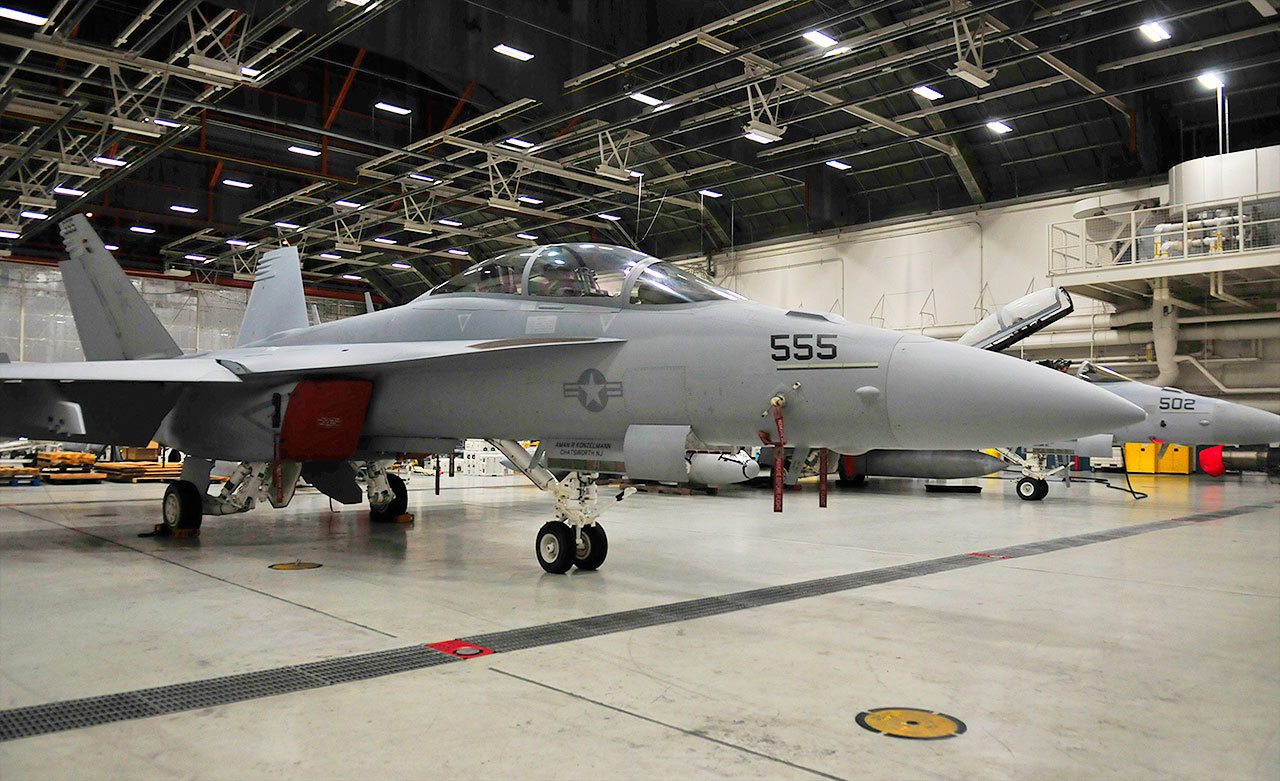Navy officials are prepared for just about any questions citizens might have about plans to bring more EA-18G Growlers — and more noise — to Whidbey Island.
Officials from U.S. Fleet Forces Command in Virginia, the base commanding officer, public relations officers and even medical experts are available to be grilled at meetings this week on the draft Environmental Impact Statement, or EIS, which analyzes impacts from the planned increase in the number of the aircraft based at Naval Air Station Whidbey Island.
The first meeting was held Monday in Port Townsend and the second one in Oak Harbor Tuesday. The main event, however, is expected to be Friday in Coupeville, where the Navy’s use of the touch-and-go field has been the cause of controversy and the subject of a federal lawsuit.
The meeting is 4-7 p.m., Friday, Dec. 9 at the Coupeville High School Commons.
In addition, Navy officials held a meeting for the media Monday on base.
The draft EIS is a long and complicated document. To help people understand it, the Navy is providing a guide to the meetings, which are in a workshop format with different “stations” covering different issues.
One of the purposes of the meetings is to collect public comments, which are a serious matter for the Navy.
All of the comments will be published and responded to in the final EIS, which should be completed in late 2017, according to Lisa Padgett, the project manager for the EIS.
People can also submit comments at www.whidbeyeis.com, a website dedicated to the project.
Padgett said the comments will be considered when Navy staff chooses a preferred alternative in the final EIS.
The draft presents a series of different alternatives based on what types of squadrons the 35 or 36 new Growlers will be in and how field carrier landing practice will be divided between the Ault Field base and Outlying Field Coupeville.
The Secretary of the Navy, or his designee, will make the final decision.
Of course, the draft EIS discusses noise. It contains studies on Growler noise, estimates on how loud the noise will be at different places, a review of literature on the health effects of jet noise and overviews on the impacts on the environment.
But it’s also clearly important to Navy officials that the public understand how vital Growlers are to national defense, as well as the importance of the aircraft carrier landing training at Outlying Field Coupeville.
Capt. Geoffrey Moore, the commanding officer of the base, explained that Growlers’ advanced electronic warfare capabilities, essentially jamming enemy radar, protects other aircraft and troops.
Where there’s a military action, he said, there are Growlers.
Cmdr. Scott Farr said the quality of the training that OLF Coupeville provides is irreplaceable.
The geography around the outlying field and the runway itself is much closer to the conditions of a real aircraft carrier.
The military requires pilots at different levels of experience to complete certain amounts of landing practice.
“The most challenging event in the world of aviation is to land an aircraft on an aircraft carrier,” Farr said.
The Growlers are traveling at about 150 mph and have to hit a wire that is five or six inches off the carrier’s deck plate, often in extreme darkness, Padgett said.
“It’s not just about the safety of the pilot, but it’s all the other sailors on the flight deck,” she said.



